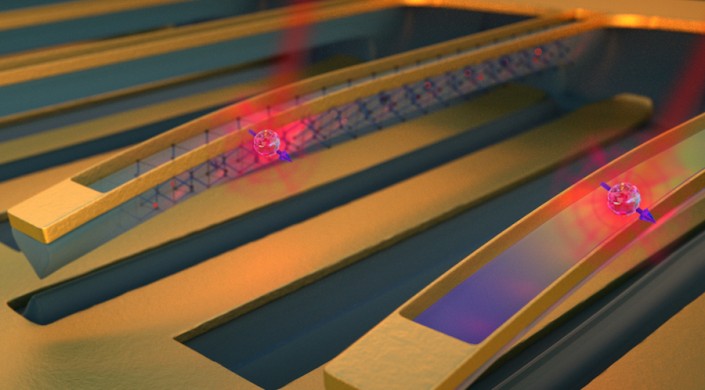
Electrodes stretch diamond strings to increase the frequency of atomic vibrations to which an electron is sensitive, just like tightening a guitar string increases the frequency or pitch of the string. The tension quiets a qubit’s environment and improves memory from tens to several hundred nanoseconds, enough time to do many operations on a quantum chip. (Second Bay Studios/Harvard SEAS)
A process similar to guitar tuning improves storage time of quantum memory. A quantum internet promises completely secure communication. But using quantum bits or qubits to carry information requires a radically new piece of hardware – a quantum memory. This atomic-scale device needs to store quantum information and convert it into light to transmit across the network.
A major challenge to this vision i...
Read More









Recent Comments